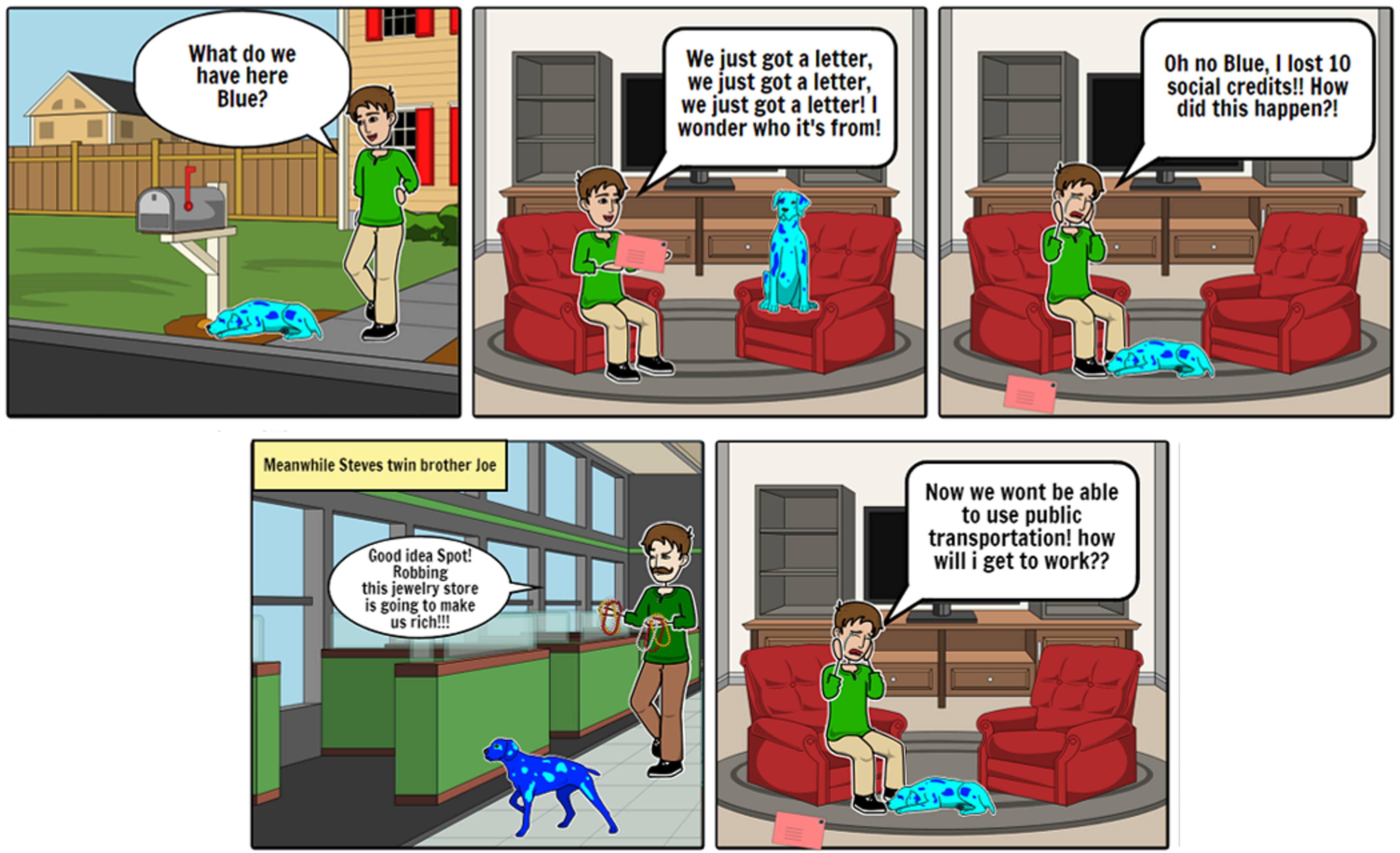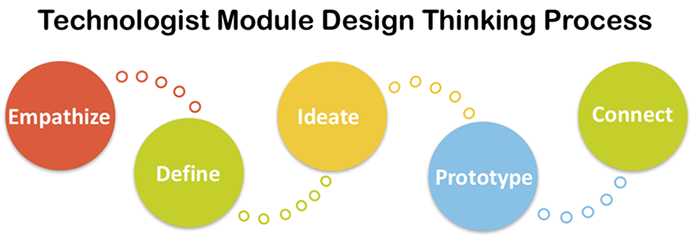After reading the article “Leave no Dark Corner” I immediately thought of how different our lives would be if we grew up in a society with a social credit system. As described in the article, citizens in this system would lose credits which would ban them from certain benefits/privileges in society such as using public transportation, travel, or certain jobs. The citizens in this system could potentially lose credits for what they buy, who they date/marry, who their friends are or who their parents are.
The article made me think about how different our childhood could have been and for some reason I thought of one of my favorite childhood TV shows (since I am being the shows character for Halloween). I chose to depict a scene of Steve from Blues Clues happily receiving a letter only to find out the letter is informing him that he has lost 10 social credit points. He does not understand why he lost these points, then in the next scene we see Steve’s twin brother Joe robbing a jewelry store suggesting that Steve undeserving lost his social credits due to a case of false identity.
I chose to represent this scene using the resource Storyboardthat.com because it is a new resource that i was recently introduced to that is easily customizable and i believed could be used to effectively present my thoughts on this subject.
I foresee a lot of issues with this social credit system. First of all in a world where identity theft is such a big issue, I see a lot of potential for undeserving credit loss. Secondly, I do not agree with the reasons you can lose credit. I believe the reasons for losing points will leave a lot of people vulnerable and isolated based on factors they cannot control. For example, losing points based on who your parents are and what they do is socially unjust and will only lead to cases of intergenerational poverty. This system will unfairly isolate those who are already born into oppression.
I completely disagree with this Idea of a social credit system mainly because this system will oppress people based on things out of their control. For example, my grandmother was born in an orphanage along with her nine other half brothers and sisters. She was one of the few who were never adopted and lived her life in orphanages or group homes until she turned 18 and was kicked out into the world. She was born into poverty and when my father was growing up he worked hard to escape that life and to provide a better life for his own children. If we lived with this social credit system, my father would have had to work twice as hard to get where he is now. He would have lost points due to my grandmothers misfortunes and due to the fact that my grandfather was an alcoholic. This would have most likely affected my life as well and my grandchildren as well creating a chain of intergenerational oppression.
I believe one of the biggest problems with our society is that people work against one another to get to the top and once they’re they they use their power to oppress those below them rather than help lift them up. This social credit system will only make this issue worse. As a teacher I want to help my students achieve their best potential in life. I believe in equality and not a system of social classes/cliques. Imagine you are planning a field trip for your students and then you find out that one of your students cannot go because he has a “social credit” of 50/800. Even worse, the reason he has this poor social credit is because he is the son of a criminal.
In conclusion, I believe a social credit system which grades citizens and can determine their quality of life is inhumane and is a horrible idea.




